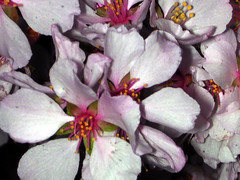
Image via Wikipedia
The point of meditation of course is to achieve the feeling of being centered, and to let go of everyday concerns and issues. While this concept is certainly easy to understand, putting that theory into practice can be quite difficult to achieve. How to actually achieve that balance and sense of well-being can be quite elusive, and there are many ways to achieve this important goal.
Some of the most common ways to achieve the inner balance that meditation offers include reciting mantras, controlling breathing patterns and even more physically demanding activities like Qi Gong and yoga.
The best practice is to make the most of the time you have available and do what works for you personally. There is no one right way to meditate, and too many people make the mistake of making meditation into a bigger challenge than it really is.
For many people, simply repeating a word or mantra provides a great deal of mental and physical relaxation. While there are of course common words and phrases that are used, it is important to find the one that works best for you personally. Whether it is the traditional “Om” or a phrase that is understood only by you, the key is to personalize your mantra to make it work for you.
Many people who are new to meditation make too much of a deal out of controlling their breathing patterns. Controlling breathing patterns is not as difficult or as complicated as it sounds – the key is to simply breathe. Meditation can be as simple as taking a deep breath and slowly letting it out.
One of the best ways to achieve the benefits of meditation and the benefits of exercise at the same time is to engage in a physically active meditation like yoga or trance dancing. If you think such activities are right for you, be sure to look for a gym or community organization that offers them.
It is important to remember that traditional forms of exercise can be a form of meditation as well. If swimming in the local pool relaxes you, include it as part of your meditation program. If you prefer martial arts, include that. Often simply going for a long walk in the woods can provide a powerful antidote to a stressful day. The key is to do what works for you, rather than to try to fit your meditation program into a one size fits all mold.
One of the most common obstacles encountered by those who are new to meditation is feeling that there is not enough time to meditate. We all lead busy lives these days, and it can be difficult to make time for yet another activity, no matter how important it may be. As you can see, however, meditation can be made into a part of everyday life, and this can make it much easier to enjoy the benefits of this ancient practice without sacrificing your precious spare time.


